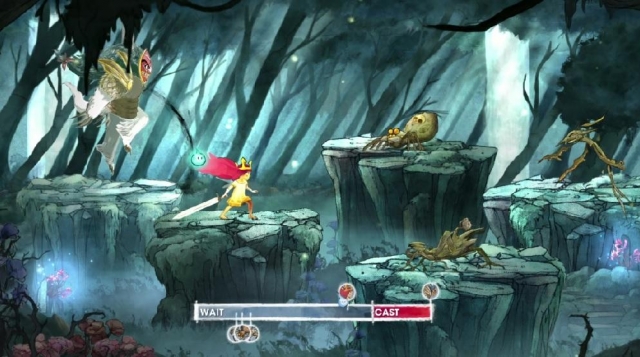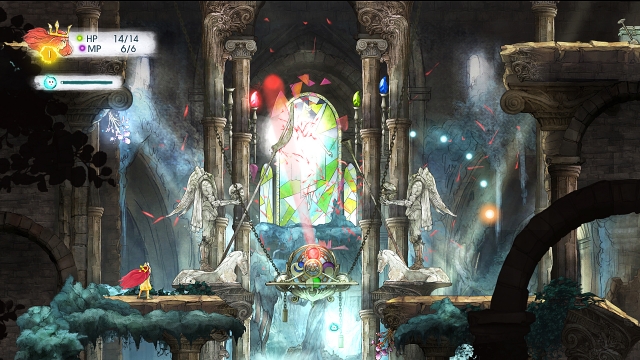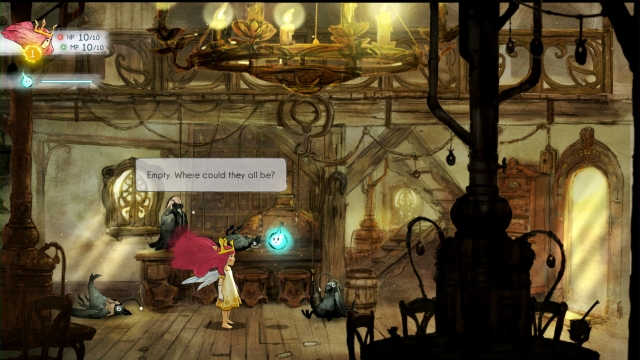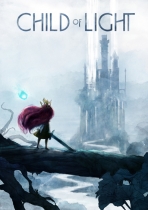
Child of Light Review
If I were the protagonist in Child of Light, I’m not sure I could cope with its deep sleep adventure in Lemuria, mainly because I follow logic, and would assume after sleep, dreams follow - where your actions have no consequence (due to, you know, not being real). But Child of Light’s heroine, Aurora, takes this dream seriously. And she should, because if she doesn’t, she’s never going to make it back home to see her father: The Duke.
If Capcom’s Dragon’s Dogma is an example of a Japanese developer attempting to interpret the Western RPG, then Child of Light is undoubtedly a Western take on the traditional JRPG. But don’t start conjuring up images of incessant level grinding, effeminate men or nonsensical narratives - none of that is here. No, Child of Light takes the best part of the historical JRPG genre - turn-based combat - builds upon, and then complements it with an excellent art style and whimsical soundtrack.

After falling into a mysterious catatonic state, Aurora, daughter of the Duke of Austria, awakes to find herself in the world of Lemuria, a strange world far from her father’s luxurious 19th century kingdom. The strawberry-blonde heroine has no choice but to soldier on and discover why this world is in disrepair… one turn-based battle at a time.
With a twist not dissimilar to Final Fantasy VIII’s ‘Active Time Battle’ system - unsurprising considering Ubisoft Montreal’s citing the game as inspiration - CoL’s skirmishes play out with the use of an activity bar planted at the bottom of the screen. Split into two unequal parts, Aurora’s, her companion’s and her enemies must wait until their respective markers reach the end of the first bar to queue up an attack. When it reaches the end of the second, your choices are played out.
It sounds like a simple and inconsequential feature at first, but it’s the foundation on which Child of Light’s combat system is built. Variables such as how long attacks take to cast, status effects and buffs can all increase (or decrease) the time it takes to pip your enemy to the post and get an attack off first. The biggest and best variable though, comes in the form of a fluorescent blue blob... A.K.A. Igniculus.

This brave little Puyo Puyo look-alike has as many functions as a Swiss-Army knife. In addition to being able to heal party members or hinder enemies mid-battle with the squeeze of the right trigger, he can also find secret item caches and help Aurora to solve light-based puzzles in the beautiful overworld: controlled entirely with the right thumbstick.
Much has been made of CoL’s art style leading up to its release, and after spending prolonged periods of time with it, there’s no surprise Ubi Montreal advertised it as one of the game’s main selling points. The hand-drawn, vibrant scenery, characters and combat effects exude a genuine story book feel, helped in no small part by the poetic - and sometimes nonsensical - banter between Aurora and her acquaintances.
And there’s a bunch of them too. The further Aurora travels across Lumeria, the more party members she’ll acquire. From Rubella, the circus jester whose lost her troupe, to the stout and timid Finn, CoL is rammed with colourful characters, all with unique combat abilities.
The only shame is that combat doesn’t really necessitate a complex combat system. Each party member can be given stat and ability upgrades with each level up, but you never really feel any stronger than when you set out. Whether this is down to the limited abilities on offer for each character or because difficulty rises so gradually is hard to say. A higher difficulty is available though, and should provide a greater challenge for those looking for one. It also gives more purpose to the Oculi crafting system that bestows passive buffs when attached to a character.

The JRPG inspirations are obvious, but CoL definitely isn’t the same length as one. The useless fluff you would usually associate with the JRPG or RPG genre in general is absent here, making CoL feel very focused on all fronts. With that said, there are some extras you can seek out. A few side quests - like helping Robert the mouse open a vault inside a gigantic Ent-like creature - and hidden items are scattered around the side-scrolling world for you to discover at your leisure.
Honestly, there’s not a great deal of replay value with CoL, but you can continue play after the end credits roll, and if you’re sorely missing some same-screen co-op, you can get another friend to help you out by taking over control duties of Igniculus.
If this is the start of many new projects from Ubisoft Montreal, no doubt many people are going to be watching with keen eyes, because Child of Light provides a fantastical experience that revitalises turn-based combat for a new audience. Give it a go, you won’t be disappointed.
Child of Light (Reviewed on Windows)
This game is great, with minimal or no negatives.
If this is the start of many new projects from Ubisoft Montreal, no doubt many people are going to be watching with keen eyes, because Child of Light provides a fantastical experience that revitalises turn-based combat for a new audience. Give it a go, you won’t be disappointed.












COMMENTS